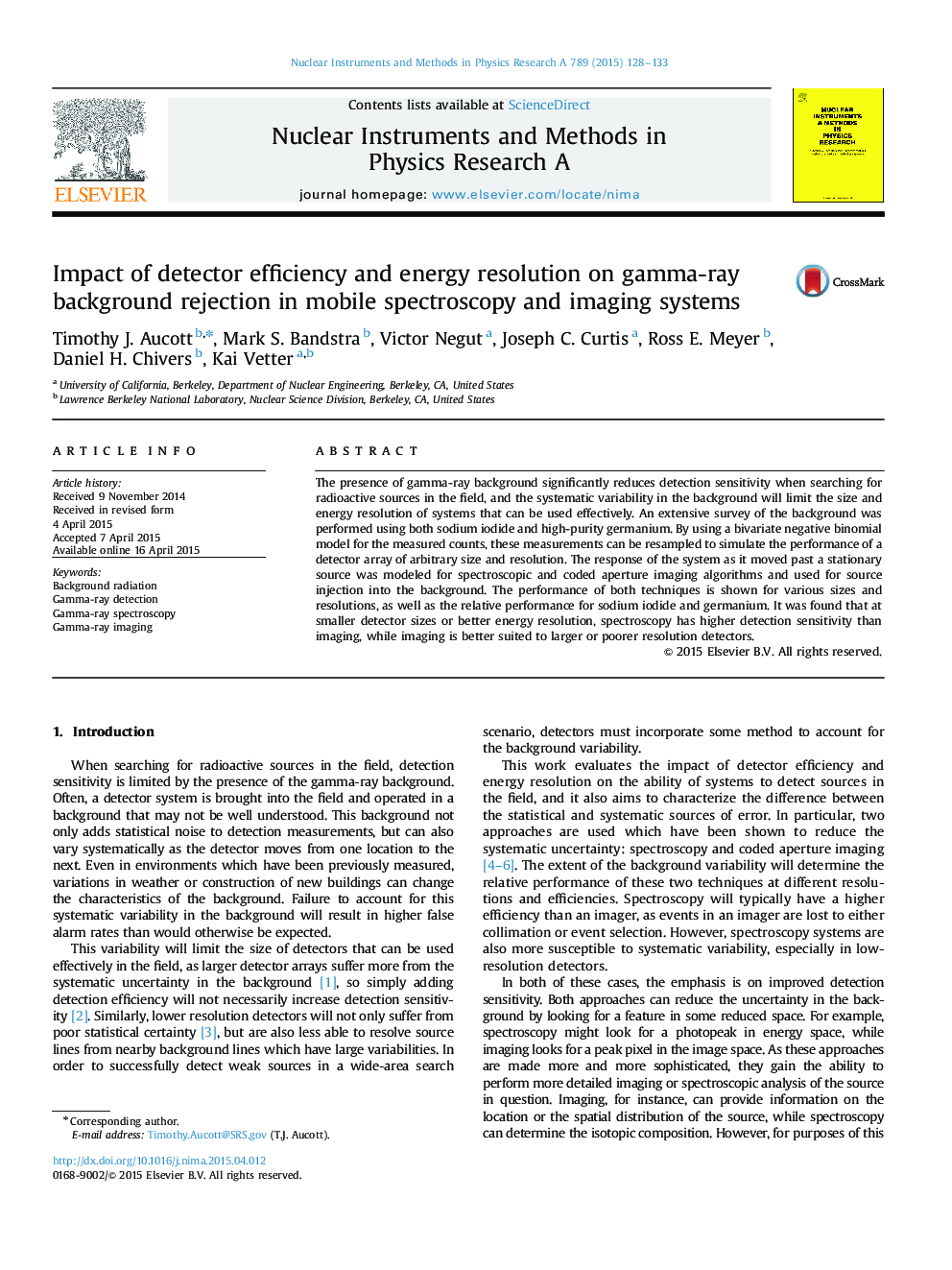| Article ID | Journal | Published Year | Pages | File Type |
|---|---|---|---|---|
| 8172931 | Nuclear Instruments and Methods in Physics Research Section A: Accelerators, Spectrometers, Detectors and Associated Equipment | 2015 | 6 Pages |
Abstract
The presence of gamma-ray background significantly reduces detection sensitivity when searching for radioactive sources in the field, and the systematic variability in the background will limit the size and energy resolution of systems that can be used effectively. An extensive survey of the background was performed using both sodium iodide and high-purity germanium. By using a bivariate negative binomial model for the measured counts, these measurements can be resampled to simulate the performance of a detector array of arbitrary size and resolution. The response of the system as it moved past a stationary source was modeled for spectroscopic and coded aperture imaging algorithms and used for source injection into the background. The performance of both techniques is shown for various sizes and resolutions, as well as the relative performance for sodium iodide and germanium. It was found that at smaller detector sizes or better energy resolution, spectroscopy has higher detection sensitivity than imaging, while imaging is better suited to larger or poorer resolution detectors.
Related Topics
Physical Sciences and Engineering
Physics and Astronomy
Instrumentation
Authors
Timothy J. Aucott, Mark S. Bandstra, Victor Negut, Joseph C. Curtis, Ross E. Meyer, Daniel H. Chivers, Kai Vetter,
